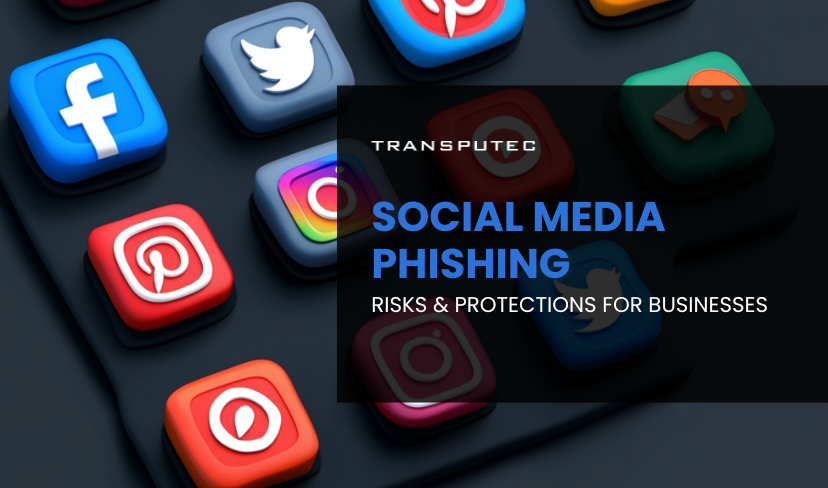Written by KRITIKA SINHA | MARKETING
In the digital age, where communication and networking thrive online, social media phishing has become a serious threat, affecting individuals and businesses alike. Social media phishing refers to malicious tactics used by cybercriminals to exploit personal and organisational data via platforms like Facebook, LinkedIn, Twitter, and Instagram. As of 2022, phishing attacks on social media have surged by over 150%, affecting millions globally.
In this post, we’ll explore what social media phishing entails, its impact on individuals and businesses, and, most importantly, actionable steps for protection. Let’s delve into the reality of this modern cybersecurity risk.
The Rise of Social Media Phishing
The numbers tell a compelling story. In 2023, the Anti-Phishing Working Group (APWG) reported over 1.4 million social media phishing incidents, with the frequency increasing by 30% yearly. Notably, social media phishing accounted for 12% of all phishing incidents, marking it as one of the fastest-growing cyber threats. LinkedIn and Instagram remain the most targeted platforms due to their large user bases and trust-driven networks.
What is Social Media Phishing?
Social media phishing involves using social media platforms as bait to lure users into divulging personal, financial, or organisational information. Phishers use tactics such as fake profiles, cloned websites, or impersonation to convince users to reveal sensitive information or click on malicious links. For businesses, the stakes are high; falling victim to these schemes can lead to severe financial losses, reputational damage, and data breaches.
Cybercriminals typically exploit human psychology, appealing to trust, curiosity, or urgency, to manipulate unsuspecting users. With over 4.6 billion people using social media as of 2023, the attack surface is vast, and phishers are only growing more sophisticated.
How Social Media Phishing Affects Businesses and Individuals
Social media phishing is more than a nuisance; it’s a direct threat to cybersecurity. Here’s how it impacts businesses and individuals:
1. Financial Losses
According to recent reports, the average business impacted by social media phishing suffers losses of approximately $3.86 million per breach. For individuals, compromised accounts can lead to unauthorised financial transactions, often leaving them with minimal recourse for recovery.
2. Compromised Data and Privacy
Social media phishing tactics often target login credentials, corporate emails, or sensitive files. Once hackers access personal or company accounts, they can steal or misuse data, impacting privacy and data security. In 2022, nearly 63% of phishing incidents resulted in compromised business accounts, a significant escalation from prior years.
3. Brand Reputation
For businesses, a single phishing incident can damage brand reputation, eroding customer trust. Clients expect data confidentiality; when breached, it leaves lasting impacts on the company’s credibility. Around 60% of small companies close within six months of a data breach, underscoring the gravity of safeguarding against social media phishing.
Protect your Business 24/7 with Transputec!
Our Managed SOC Cost Calculator estimates potential expenses for security tools and other costs based on your requirements.
Common Social Media Phishing Tactics
Social media phishing has grown more sophisticated, with attackers using creative techniques to trick individuals and businesses into sharing personal information, and credentials, or clicking on harmful links. Here are some of the most common social media phishing tactics:
1. Fake Profiles and Impersonation
One of the most prevalent tactics is creating fake profiles that impersonate real people or trusted organisations. Attackers use these fake profiles to build trust with followers, connecting under the guise of someone reputable. For example, on LinkedIn, attackers often impersonate HR professionals, executives, or recruiters to engage employees, ultimately gathering sensitive information. These profiles may look very convincing, complete with profile pictures, fake endorsements, and job histories.
2. Phishing Links in Messages and Comments
Social media platforms like Instagram, Twitter, and Facebook allow easy sharing of links, which attackers leverage by placing phishing links in direct messages, comments, or even ads. These links often lead to fake login pages or malicious websites that capture user credentials or install malware on the victim’s device. Phishers often target multiple users, sending messages that look personal but contain malicious links.
3. Fake Contests and Giveaways
Giveaways and contests are a common engagement tactic on social media, and attackers exploit this by creating fake promotions. They offer followers a chance to “win” prizes in exchange for personal information, passwords, or even credit card details. Attackers might claim users need to provide payment information for “shipping fees” or enter login details to access a “winner’s portal,” gaining access to sensitive information.
4. Credential Harvesting with Fake Login Pages
Phishers often clone popular social media login pages to capture login credentials. Users are lured in via messages or posts that prompt them to log in for various reasons, like account verification or unlocking exclusive content. When they enter their login details on the fake page, attackers capture the credentials. This tactic is particularly effective on platforms like Instagram and Facebook, where users often click on links shared by friends or popular accounts without questioning their authenticity.
5. Malicious Ads and Pop-ups
On platforms that allow ads, such as Facebook and Instagram, attackers sometimes purchase ads designed to look legitimate but contain malicious links. These ads often promise exclusive deals, discounts, or limited-time offers to attract clicks. Once users click, they may be directed to phishing sites or prompted to download malware-infected files. This tactic can be especially effective during popular shopping seasons like Black Friday or holiday sales, where users are more likely to click on seemingly good deals.
6. Social Engineering Through Emotional Appeals
Cybercriminals frequently use emotional appeals to manipulate users into action. For example, they might create posts or messages that appear urgent, such as warnings about account suspension or claims that someone has posted negative information about the user online. By instilling fear or urgency, they encourage users to act quickly without verifying the authenticity of the message.
7. Hijacking Popular Hashtags
By hijacking trending hashtags, phishers gain visibility and credibility. They post malicious content with popular hashtags, drawing in unsuspecting users who are following or searching those tags. Once the users engage with these posts, they’re directed to phishing sites or enticed to click on malicious links.
8. Business Email Compromise (BEC) through Social Media
Business email compromise (BEC) is a targeted phishing attack, and on social media, phishers often use platforms like LinkedIn to identify potential victims within an organisation. By impersonating high-level executives or creating fake business pages, attackers send connection requests to employees, gathering information to craft highly convincing BEC scams. This tactic has resulted in significant financial losses for companies globally.
Identifying Social Media Phishing: Red Flags to Watch
Awareness of phishing red flags is essential. Here are some signs that a social media profile or message may be a phishing attempt:
- Unexpected messages or requests from unknown users
- Links leading to suspicious URLs: Often, phishers use URLs resembling legitimate sites but with slight alterations (e.g., “facebo0k.com” instead of “facebook.com”).
- Grammar and spelling errors: Many phishing messages contain typos or unusual phrasing.
- Requests for sensitive information: Phishers might ask for login credentials, account verification, or payment details.
How to Protect Against Social Media Phishing
Preventing social media phishing requires a multi-layered approach, combining technology, policies, and training. Here are essential measures to protect yourself and your organisation:
1. Implement Strong Password Policies
Encourage employees to use complex, unique passwords for social media accounts, and enable two-factor authentication (2FA) wherever possible. This added layer of security significantly reduces the risk of account compromise.
2. Educate Employees on Phishing Awareness
Regular training on recognising phishing tactics is crucial. Employees should know how to identify phishing links, verify message authenticity, and report suspicious activity. A recent survey showed that 88% of businesses experiencing phishing had not conducted regular employee training.
3. Use Social Media Monitoring Tools
Businesses should employ social media monitoring tools to detect fake profiles or malicious activities targeting their brand. Platforms like PhishLabs and ZeroFOX can provide real-time alerts to mitigate risks.
4. Establish a Comprehensive Security Policy
Develop a policy that covers social media security, outlining procedures for identifying and reporting phishing attempts. Regular audits and updates are essential to adapt to evolving threats.
5. Partner with Cybersecurity Experts
Considering the complex nature of social media phishing, partnering with cybersecurity professionals like Transputec ensures that your business stays protected with tailored security solutions, advanced threat detection, and employee training.
Conclusion: Protect Your Business with Transputec
In a world where social media phishing continues to evolve, businesses must prioritise robust security to safeguard their assets and reputation. At Transputec, we specialise in cybersecurity solutions tailored to the unique challenges of social media threats. Contact us today to speak with an expert and discover how we can help you strengthen your defences. Your security is our commitment—let’s take the first step together toward a safer digital presence.

Secure Your Business!
Ready to explore how we can enhance your security posture? Contact us today to speak with one of our experts.
FAQs
What makes social media phishing different from other phishing attacks?
Social media phishing specifically targets users on social networks, exploiting the trust factor in these platforms. Phishers create fake profiles or send messages that seem personal or familiar, increasing the chances of users falling for their traps.
How can I tell if a message on social media is a phishing attempt?
Phishing messages often have urgent language, unexpected requests, or poor grammar. Always check the sender’s profile and avoid clicking on links unless you are certain of their legitimacy.
What are the risks of social media phishing for small businesses?
Small businesses face significant risks, including data breaches, financial losses, and reputational damage. Given their limited resources, small businesses may struggle to recover from such incidents, underscoring the importance of proactive defence.
Can social media phishing be prevented with anti-phishing software?
Anti-phishing software can help by flagging malicious links and blocking suspicious activity. However, it’s best combined with employee training and strong security practices to maximise protection.
Why should businesses invest in social media security?
With the increasing volume of cyber threats on social media, investing in security minimises risks and demonstrates to clients and partners that your business values data protection. It’s an essential step toward long-term reputation management and trust-building.




